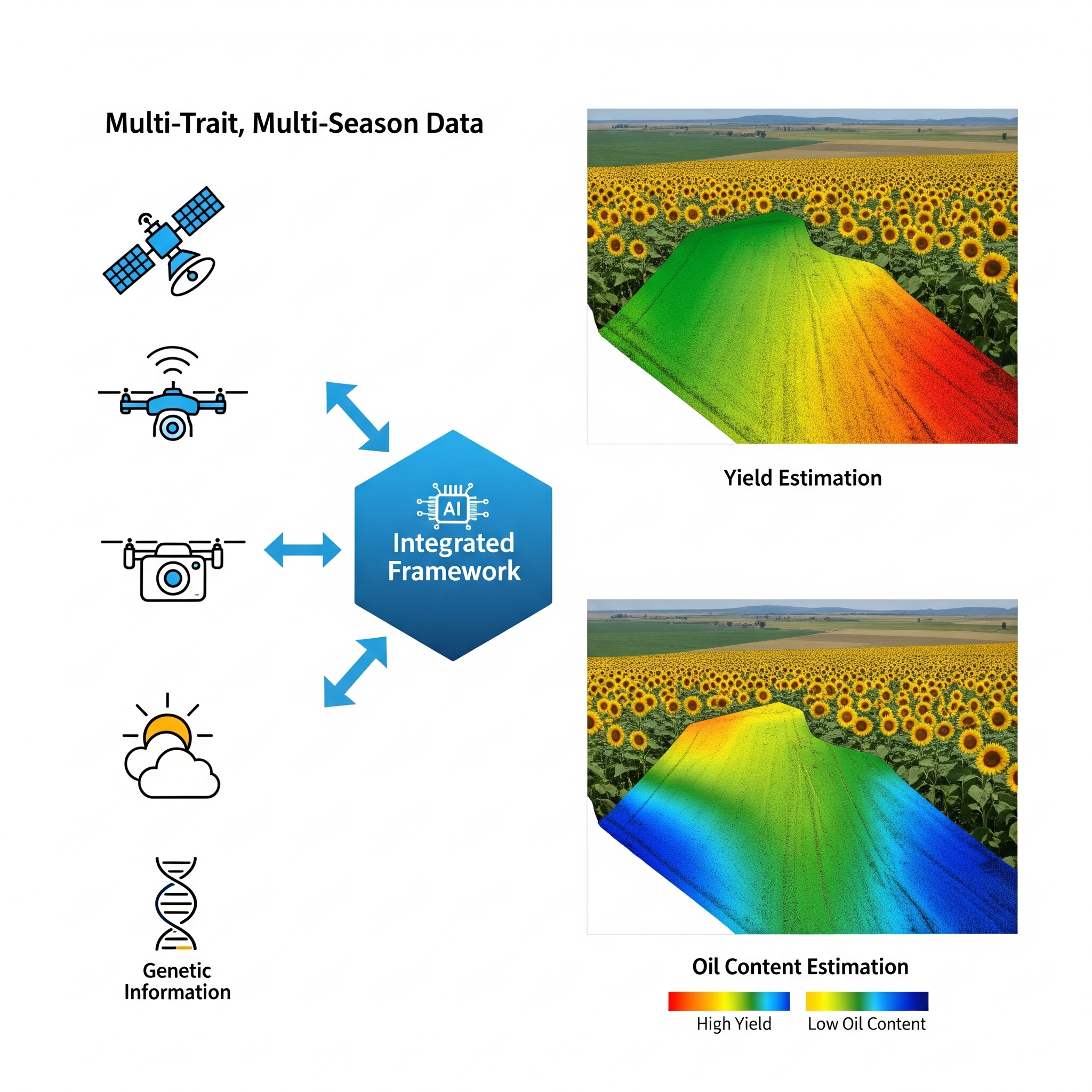Multi-Trait, Multi-Season Framework for Accurate Sunflower Yield and Oil Content Estimation
Achieving food security, promoting sustainable agriculture, and ensuring environmental sustainability are paramount for sustainable human development. In this context, sunflower cultivation serves as a crucial source of edible oil, while offering opportunities for economic development and habitat diversification. However, it is characterized by genetic variability, influencing oil content and seed yield in different varieties and genotypes. This poses numerous challenges in developing generalized estimation methods applicable across all sunflower types due to varying impact of climate and cultivation practices. Obtaining accurate estimations becomes crucial, considering the differences within varieties and influence of other factors like seed size and maturity. Traditional methods of Soxhlet extraction are time-consuming, prompting the exploration of advanced techniques like near-infrared spectroscopy (NIRS) and nuclear magnetic resonance (NMR), albeit with associated challenges of cost and expertise.
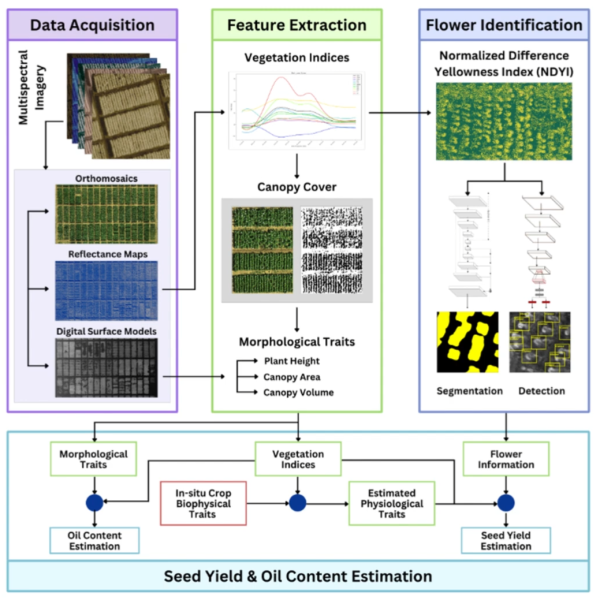
Precise estimation of seed yield and oil content holds immense importance for both farmers and breeders while selecting high-yielding sunflower varieties. With the advent of precision agriculture techniques through remote sensing, integration of cutting-edge technologies, particularly Unmanned Aerial Vehicles (UAVs) equipped with artificially intelligent capabilities and multispectral sensors, is a promising way forward. UAV data, captured beyond the visible spectrum, facilitates crop health assessment, aiding in identifying stress, diseases, or nutrient deficiencies. This assists in determining optimal harvest times by monitoring crop development over the season and identifying peak oil content stages. To analyze the morphological and physiological crop traits that impact sunflower yield, understanding their intricate relationships is imperative. Taller plants with larger canopies generally exhibit higher oil content, but excessively tall plants may allocate more energy to stem development. Similarly, canopy characteristics, area and density, impact photosynthetic efficiency and, consequently, seed development in the later stages of a crop’s season. The interplay of these factors is complex, influenced by genetic traits, environmental conditions, and agricultural practices. There has been limited research on the effects of morphological and physiological traits on sunflower seed yield and oil content, whereas elementary yield prediction methodologies either rely on satellite imagery with coarse results or deal with other oilseed crops.
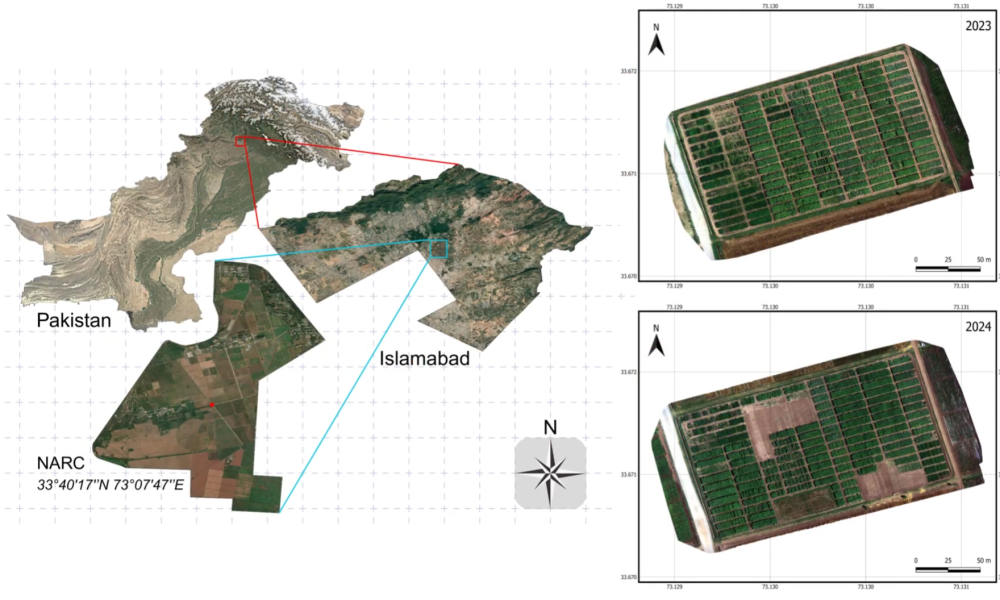
Recent years have seen a growing interest in non-destructive and scalable techniques for estimating seed yield and oil content in oilseed crops. Traditional laboratory methods including gravimetric analysis and solvent-based techniques, while accurate, are time-consuming and environmentally hazardous. NIRS, Fourier-Transform Infrared Spectroscopy (FTIR), and NMR have also been explored because of their efficiency and minimal sample preparation requirements, but their cost, sensitivity to moisture and composition, and calibration complexity have limited field-scale deployment. Remote sensing has emerged as a viable alternative, providing rapid, non-invasive estimation of crop traits over time. Satellite-based approaches have demonstrated promising results in oilseed yield forecasting, but they are often constrained by coarse spatial resolution and limited revisit frequencies, making them suboptimal for field-scale phenotyping. In contrast, UAV-based imaging enables high spatial and temporal granularity, well-suited for plot-level monitoring of morphological and physiological dynamics throughout the growing season.
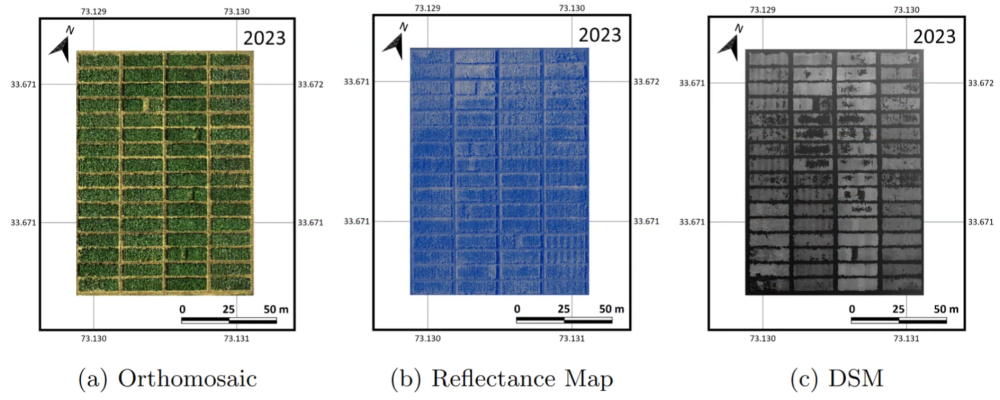
Machine learning models have been increasingly applied to spectral and structural data for yield prediction in sunflower and related crops. However, most of these studies rely on single vegetation indices (NDVI or EVI), limiting their ability to fully capture the complexity of plant structure and its physiological status. Moreover, most existing approaches overlook critical features like fresh weight, dry weight, moisture content, and floral attributes like head count and flower coverage area, all of which provide complementary signals related to crop productivity.
Addressing these limitations, this work explores the integration of UAV-derived vegetation indices, structural traits, physiological features, and floral attributes to improve the estimation of sunflower seed yield and oil content across multiple seasons. The objective is to address key challenges in high-throughput phenotyping by using these parameters to develop estimation models for sunflower breeding programs. This approach is intended to support crop breeders in efficiently screening and selecting superior sunflower varieties, with potential benefits for oilseed production systems in regions where edible oil dependency is a major concern. The methodological framework incorporates 12 vegetation indices, physiological features (fresh weight, dry weight, moisture factor), and morphological traits (plant height, canopy area, canopy volume) to provide a comprehensive representation of growth progression over the season. Machine learning models are trained on remotely sensed time series data to investigate the relationships between crop traits and yield potential. This approach addresses limitations of previous studies that have predominantly relied on RGB imagery or isolated vegetation indices. In addition, deep learning-based techniques are employed on multispectral imagery to extract floral attributes. Semantic segmentation and object detection models are applied to Normalized Difference Yellowness Index (NDYI) reflectance maps for estimating flower coverage area and head count, respectively. These features are incorporated into the modeling pipeline to explore their relevance for pre-harvest crop trait prediction.
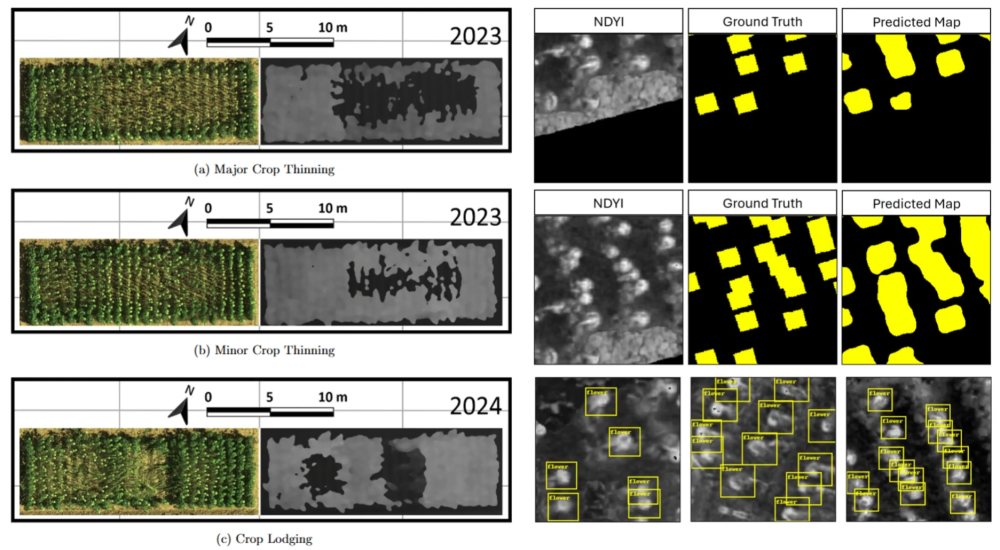
This work makes the following key contributions: (i) Extracting key morphological & physiological traits from UAV multispectral data to estimate sunflower seed yield and oil content across multiple seasons, (ii) Mapping sunflower head count and flower coverage area through relevant object detection and semantic segmentation methods on Normalized Difference Yellowness Index, and (iii) Comparison and analysis of 12 different vegetation indices, both independently and when used with aggregated feature sets, to identify the best feature combinations for estimating seed yield and oil content. Based on the limitations of existing approaches, this work investigates the added value of combining multiple attributes derived from remotely sensed data. The study specifically investigates whether the integration of structural, physiological, and floral attributes leads to improved estimation accuracy for sunflower seed yield and oil content compared to VI-based methods.
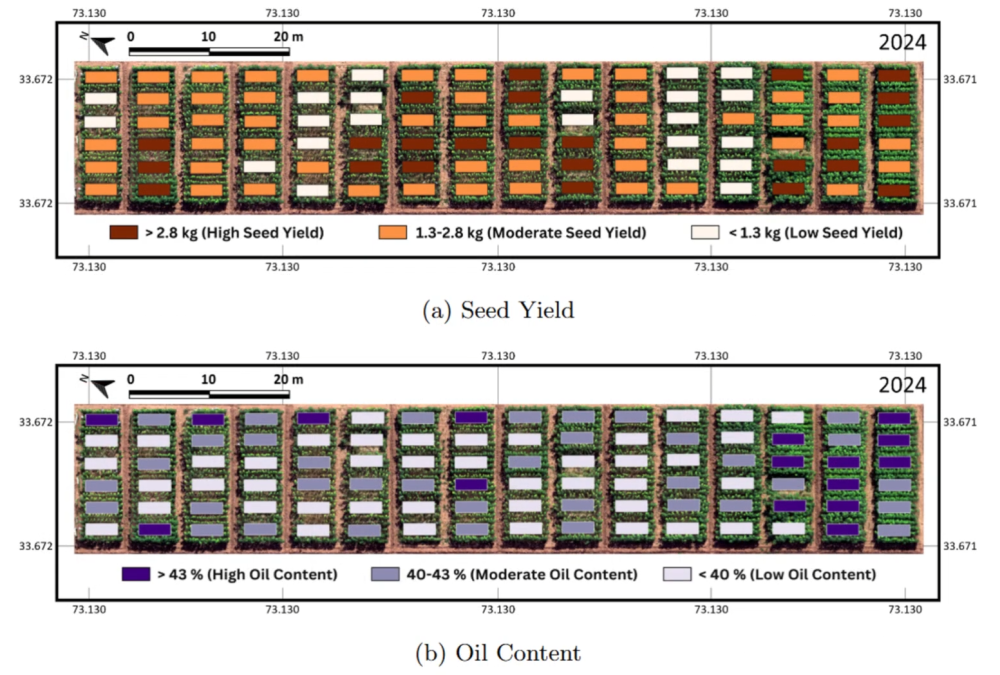
Video
Faculty
-
Dr. Zuhair ZafarDr. Zuhair Zafar
-
Dr. Muhammad Moazam FrazDr. Muhammad Moazam Fraz
-
Dr. Nazia PerwaizDr. Nazia Perwaiz
-
Dr. Fahad Ahmed SattiDr. Fahad Ahmed Satti
Students
-
Usama Athar
-
Muhammad Ali

